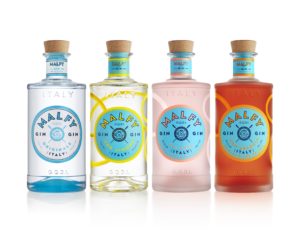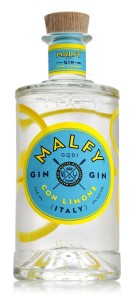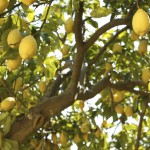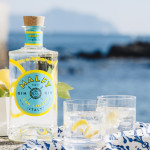First, an Update:
Last Friday, Wine and Spirits Daily reported that Mark Teasdale, CEO of Proximo Spirits is leaving to join Biggar & Leith, the company Founded by Elwyn Gladstone that markets Malfy Gin and Spytail Rum. Mark and Elwyn have previously worked together at Proximo and William Grant and collaborated on such new brands as Kraken Rum and Hendrick’s Gin, among many others.
I learned of this development after I wrote this article and it adds immensely to the story. Both these folks are top of the game spirits industry players. And, as you will see, Elwyn has already been doing amazing things with Malfy. So, this change builds on success and gives the company an even more important presence in the industry.
Leveraging the Power of Amazon and Direct-to-Consumer Sales
Malfy Con Limone Gin (the original product) is made in Italy from the luscious lemons of the Amalfi coast under the marketing and sales guidance of Elwyn, whose background includes senior positions at large spirits companies. (The original story on Elwyn and Malfy can be found here.)
I was wondering how Elwyn, with his large company experience, was making out with his fledging startup brand. So, last month, I checked in with him. He is, after all, one of the most creative and smart marketers I know. Could he transfer his skills honed at large spirits companies to a startup? In particular, I wanted to know how the brand was received by distributors. Would he get the same attention with Malfy as he got with Hendrick’s?
Little did I know when I reached out to Elwyn, that this journey is most unusual and a case study on how to beat the system and build a brand despite obstacles.
How is Malfy Doing?
After only just a few years in the market, the brand is on track to do over 185,000 6-pack cases in the US and around the world — the UK, other European markets, South and Central America, South Africa and elsewhere. He has lots of room to grow geographically and his re-order rates are impressive.
In the US, the brand is among the top 10 Super-Premium Gin in Nielsen (brands that cost more than $25 per bottle) growing at over 300% and on track to hit a top 5 position. The brand is distributed by Infinium Spirits in the US, and based on the aforementioned, I’d say they are paying attention to the brand.
He has also introduced a range of gin products. The US has the first launched Con Limone, and recently introduced Originale, a traditional gin. Outside the US, the Malfy Gin line also includes Gin Rosa, a Sicilian pink grapefruit gin, and Con Arancia, gin made with Sicilian blood oranges. He and Infinium Spirits will introduce these other gin line extensions in July.
That’s only part of the story—enter Amazon
It is fairly common for a new brand to look to the rest of the world (especially Europe) as a way to build a brand and generate sales, while waiting for the US market to wake up. What happens is that an importer is contacted, who probably has a stable of brands, and the wait for growth traction overseas becomes another frustration.
But not for Elwyn and Malfy Gin. I asked him, “How come you’re doing so well in the UK?”
The answer? Amazon and direct-to-consumer sales.
According to Elwyn, “The absence of a mandatory 3-tier system coupled with a robust purchase and delivery system creates a strong platform for direct to drinker sales. But, more important, Amazon provides the opportunity for the brand owner to use all sorts of marketing efforts and truly remain the guardian of their brand.”
In the UK and Germany, he is selling over 1,000 bottles per month and growing.
Let’s take a closer look at Amazon and liquor sales.
But, first, let’s cover a few noteworthy things about Amazon and spirits:
- As I’m sure you known (but for those who don’t) Amazon does not sell direct to consumers in the US. They tried to with wine but that ended when they acquired Whole Foods.
- Outside the US, it is the importer who sells to Amazon, but in Elwyn’s case, he has been the driving force influencing importers to use Amazon.
- The markets where Amazon is currently selling booze are limited to the UK, Germany, Spain and Italy. But they are rapidly opening other markets.
Amazon — distributor and retailer
If you talk to US distributors about Amazon, you’ll hear two views, a public and private one.
The expected and public view is, “Nobody ever built a brand on Amazon.” That’s currently true but, certainly, brand building overall in the US has changed and, for fledgling brands, the growth comes from the consumer themselves, more than the trade. That’s why privately, many distributors express concern about direct sales in general and Amazon in particular.
Recommendations from bartenders and store people are important but so is word-of-mouth among drinkers themselves. As to Amazon’s role here, Elwyn suggests,
“Think of Amazon’s product page as the world’s most efficient shelf-talker and neck-tag information booklet… including reviews from hundreds of consumers, press and PR, recipes, photos, and more. And, let’s not forget the simple star ratings based on thousands of people.”
Clearly, Elwyn has spent quite a bit of time trying to understand Amazon and its power to build and sell spirits brands so I asked him to further share his marketing and sales thoughts. After all, Malfy has become a top 10 best-selling gin, surpassing many household name brands including Hendrick’s.
Here is what he has learned about the power of Amazon and the role of the internet in general:
- The brand owner is in control. Once establishing your ownership with Amazon, you can appoint people who can manage the site/sales, but the brand is firmly in your hands.
- Brand sales drivers. Of course, product credentials (brand name, packaging, etc.) are important but Amazon also allows an owner to:
- Put up consumer reviews, so that the more frequent and better the review, the higher the brand appears in searches.
- Use key words, that also drive how well a brand does in searches on Amazon.
- Advertise via sponsored ads.
- The use of brand photos, which is a huge driver and there are ways to test which photographs work best.
- Sales data. Amazon in the UK provides easily accessible data on brand sales ranking for all brands within a given category.
- A level playing field. This is ideal for smaller brands inasmuch as the big boys cannot muscle them out as they can in stores with multiple facings, optimum shelf space and, well, plain old clout.
- More effective promotions. Amazon provides quicker and easier ways to manage and measure the impact of promotional activities.
- Tastings are more cost effective. The current approach at retail can easily cost $200 per session and the reach is limited. Amazon offers the opportunity to purchase sample boxes so consumers can buy a bunch of miniatures. It’s also a better use of the brand owner’s time than standing around a retail store doing tastings.
- Enhanced recommendations and word of mouth. According to Elwyn, the Amazon approach may just surpass a recommendation from a bartender or store-keeper. (See the earlier comment about the Amazon page strengths.)
- Making it easier to reach the on-premise trade. Those of you involved in the bar trade can relate what a nuisance it is to order a new brand from a startup. Amazon provides the ability to order any brand listed, including a single bottle
* * *
In sum, the Amazon — non-USA — platform is a powerful brand building and sales device. The brand owner stays in complete control, the tools available can provide an effective means for reaching a very wide audience, all efforts and expenditures are easily tracked and effectiveness measured, and, it is amazingly cost effective.
It is, of course, interesting to speculate whether the US will eventually go this way and create the same opportunities for the small producer as in Europe. My answer is NO, we have a 3-tier system, which is unlikely to go away, and direct-to-consumer transactions remain difficult if not impossible.
Elwyn Gladstone’s approach to building his overall and global brand business is incredibly sound both strategically and tactically. While he overcomes obstacles and patiently waits for the US business to take hold, he is leveraging the available resources outside the US to provide the wherewithal to help and to build his brand in the rest of the world.
I told you he was smart.
* * *

My thanks to Elwyn Gladstone for taking the time to share his efforts and thinking with me for this article.
I’d love to hear your thoughts in the comments section at the very end of this article or in an email to arthur@boozebusiness.com






